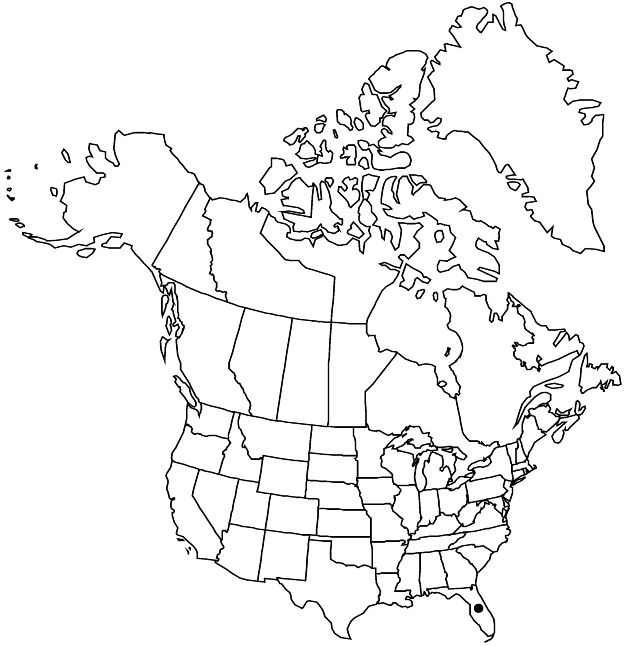Difference between revisions of "Nyssa ursina"
Torreya 27: 92. 1927.
FNA>Volume Importer |
FNA>Volume Importer |
||
| Line 19: | Line 19: | ||
|name=Nyssa biflora var. ursina | |name=Nyssa biflora var. ursina | ||
|authority=(Small) D. B. Ward | |authority=(Small) D. B. Ward | ||
| − | }}{{Treatment/ID/Synonym | + | }} {{Treatment/ID/Synonym |
|name=N. sylvatica var. ursina | |name=N. sylvatica var. ursina | ||
|authority=(Small) J. Wen & Stuessy | |authority=(Small) J. Wen & Stuessy | ||
| Line 37: | Line 37: | ||
|elevation=0–70 m. | |elevation=0–70 m. | ||
|distribution=Fla. | |distribution=Fla. | ||
| − | |discussion=<p>Nyssa ursina is limited to six counties in the panhandle region of Florida. It occurs together with N. biflora throughout its limited range, which supports recognizing it as a distinct species.</p> | + | |discussion=<p><i>Nyssa ursina</i> is limited to six counties in the panhandle region of Florida. It occurs together with <i>N. biflora</i> throughout its limited range, which supports recognizing it as a distinct species.</p> |
|tables= | |tables= | ||
|references= | |references= | ||
| Line 61: | Line 61: | ||
|publication year=1927 | |publication year=1927 | ||
|special status=Endemic;Conservation concern | |special status=Endemic;Conservation concern | ||
| − | |source xml=https://jpend@bitbucket.org/aafc-mbb/fna-data-curation.git/src/ | + | |source xml=https://jpend@bitbucket.org/aafc-mbb/fna-data-curation.git/src/8f726806613d60c220dc4493de13607dd3150896/coarse_grained_fna_xml/V12/V12_550.xml |
|genus=Nyssa | |genus=Nyssa | ||
|species=Nyssa ursina | |species=Nyssa ursina | ||
Revision as of 15:47, 18 September 2019
Shrubs or trees, 2–5 m, crown typically intricately branched; bark irregularly fissured; twigs usually glabrous, rarely puberulent. Leaves: petiole (4–)5–9 mm; blade narrowly elliptic to oblanceolate, rarely to ovate, 3–7 × 1–2 cm, coriaceous, base cuneate to rounded, margins entire, apex obtuse, abaxial surface glabrous or puberulent (primarily along veins), adaxial surface glabrous. Inflorescences: peduncle 3.2–5.5 cm, sparsely hairy or glabrous; staminate (1–)2–5-flowered, pistillate and bisexual 1–2-flowered. Staminate pedicels present. Flowers: ovary glabrous. Drupes usually black, rarely blue, glaucous, globose, 7–11 mm, smooth; stone 6–8 mm, with several low, rounded longitudinal ridges.
Phenology: Flowering spring.
Habitat: Open savannas, depressions in flatwoods.
Elevation: 0–70 m.
Discussion
Nyssa ursina is limited to six counties in the panhandle region of Florida. It occurs together with N. biflora throughout its limited range, which supports recognizing it as a distinct species.
Selected References
None.
